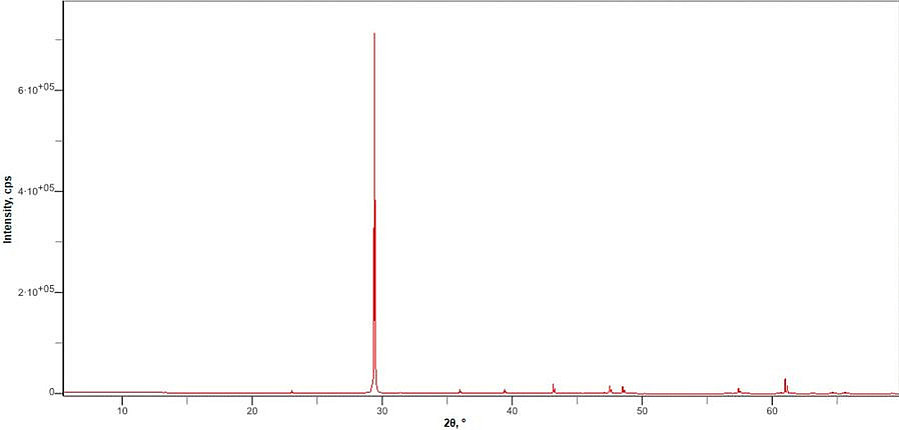X-ray diffraction (RDA, XRD) is the most important method for determining the structure of crystallized materials. These include, for example, minerals, ceramics, polymers, metals and biominerals. Measurements are made in atomic dimensions, as X-rays are very short-wave. In the case of the Rigaku Smartlab X-ray diffractometer, CuKα radiation with a wavelength of 1.54Å is generated (10-10m = 1Å). This radiation is diffracted at the crystal lattice of the sample at different angles, which generates a signal in the detector in the case of constructive interference. Bragg's law can now be used to establish a relationship between the grid plane spacing and the angle of the incoming X-ray beam. The total of the lattice plane spacings is diagnostic for the structure of the crystalline substance.

The Rigaku Smartlab X-ray diffractometer can be used to analyze powders, even in small quantities of <10 mg, with regard to the phases they contain. The X-ray spectrum is evaluated qualitatively or semi-quantitatively using Rietveld refinement.
The X-ray beam can also be focused on a small area of 100 x 100 µm to examine the smallest sample quantities or individual crystals in a thin section. This is then referred to as microdiffraction.
In addition, it is possible to measure the texture of sections by determining the orientation of the individual crystallites in a sample.
Publications
Burghardt, Tomasz E.; Ettinger, Karl; Köck, Birgit; Hauzenberger, Christoph
Glass beads for road markings and other industrial usage: Crystallinity and hazardous elements.
In: Case Studies in Construction Materials. 17. 2022. -. doi:10.1016/j.cscm.2022.e01213